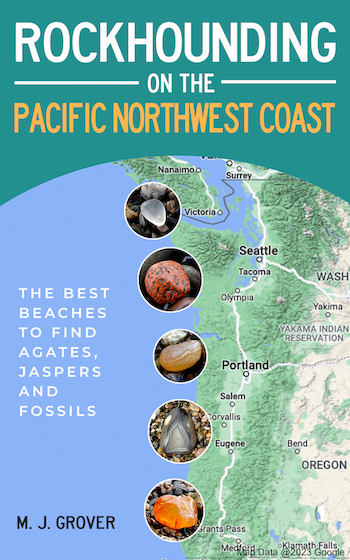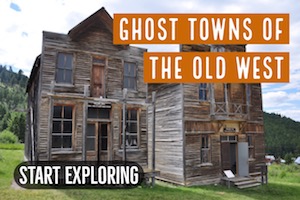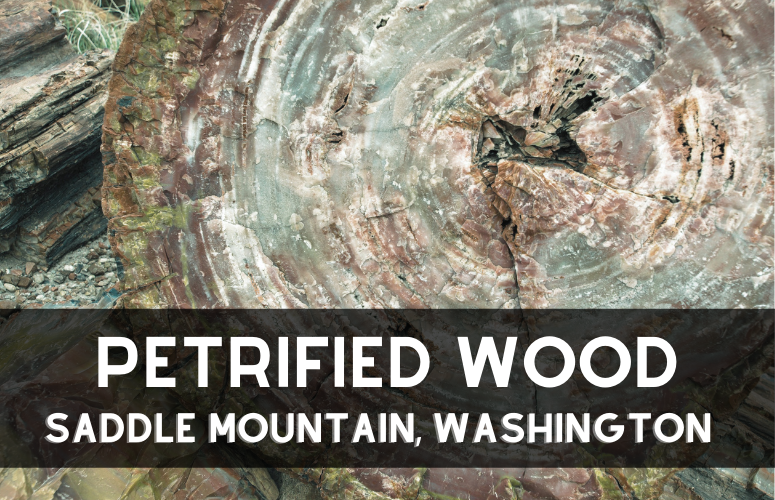
Saddle Mountains is a 30-mile long anticline ridge located in Mattawa, central Washington. The remote rocky hills are covered only by wild sagebrush and sparse blue wheatgrass. Rising at 2700 feet, the mountains overlook the vast desert countryside and the last few miles of free-flowing beautiful Columbia River.
Lying on top of these rugged hills is fossilized wood that holds an incredible record of the area’s geological history. Petrified or opalized wood is Washington state’s official gemstone, and saddle mountain is literally a gold mine for rock hounds who love agatized wood.
What type of petrified wood is found on Saddle Mountains?
What’s fascinating about the Saddle Mountain fossils is that they don’t originate from around here. The wood here is known as ‘bogwood,’ according to theories; millions of trees drowned in surrounding swamps and sunk here over time. Then these trees got buried under lava flow and volcanic ash for many years. Over time, the minerals replaced the organic matter, leaving behind the stunning petrified wood stone. It’s estimated that the petrified wood in this region is at least 14 to 15 million years old. You can find all types of wood here; cedar, fir, pine, and birch.
Where to find petrified wood on Saddle Mountain, and how do I get there?
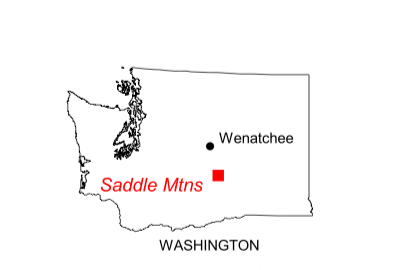
Most of the Saddle Mountain and surrounding areas are managed by the Bureau of Land Management, and it is available for public exploration. It’s an anticline mountain shaped like a fold; the north and south sides are only steep slopes, so the hill is accessible from the other two borders. However, it’s recommended to stay on the western side because the Eastern end has a lot of areas intermixed with private land, and it becomes difficult to navigate.
To get there, take Highway 243 from south of Vantage, then take the exit to the east to Mattawa on highway 24. Head east of Mattawa for a couple of miles, and you’ll see a dirt road on the left side, leading to Saddle Mountain. It’s a rough road, but a four-wheel-drive vehicle can pass through easily. There are few stretches where the road has ditches, requiring careful driving. Keep in mind that the road is not maintained, and the condition is highly dependent on the weather. It’s recommended to check the BLM alerts on conditions before heading out.
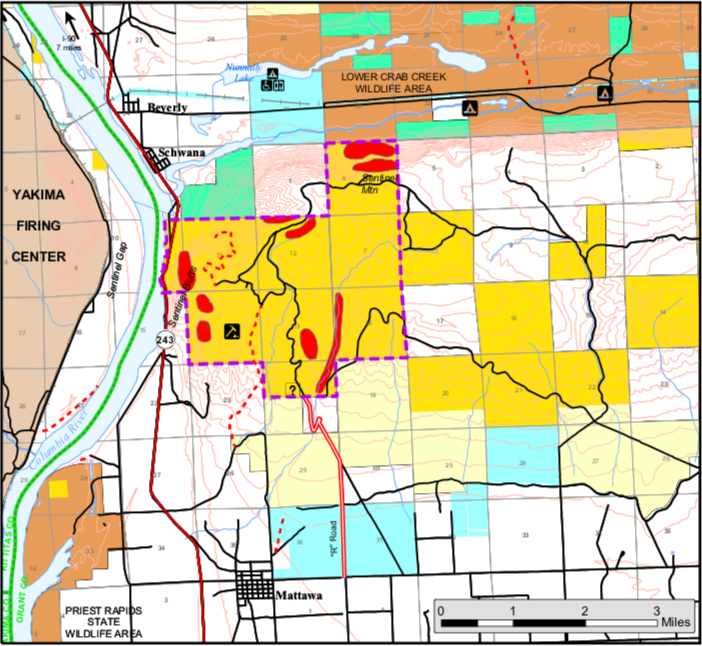
No petrified wood collecting is allowed in sections 7, 11 and 13. Check with the BLM office in Wenatchee for any updates or closures.
Are there any signs posted at Saddle Mountain?
The area doesn’t have any signs posted. There is no entrance fee and no facilities available. Though you have to follow the general rule applied on all BLM areas: make sure you respect boundaries and pack out all your trash.
You might see caution signs and fenced boundaries around private land on Saddle Mountain.
What is the best time of year to visit the Saddle Mountains?
Saddle Mountains are open all year round; however, the best time to visit is in spring or late fall when suitable weather conditions prevail. Unfortunately, there is no shade from the hot summer sun, so be mindful of this fact if you go exploring during warmer months.
What type of types of equipment you’ll need for this trip?
Saddle mountain has lots of petrified wood, and by lots, we mean you can pick up the float on your way to the top if you’re only interested in a few good pieces for your tumble; you only need to take a small rock pick and a bag.
For avid rockhounding, take a shovel and chisel, a hammer, and a bucket for ease in carrying your finds. Some areas have hard rock, but you’ll find plenty of digs already done by others.
A GPS device might come in handy too, but it’s not necessary.
A few tips for finding the best-petrified wood at Saddle Mountain
Next: Digging for Crystals at Hansen Creek, Washington

